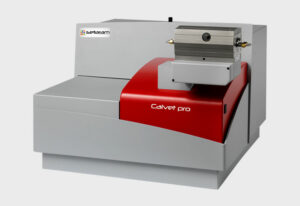Ceramics testing
The Setaram thermal analyzers and calorimeters, capable of operating at high temperatures, enable in-depth characterization of ceramic materials: phase diagrams, thermal stability, reactivity, and sintering behavior. Users can also evaluate the heat transfer properties of ceramics to simulate their behavior in furnaces or other high-temperature systems.

Optimize your ceramics by controlling their structure and reactivity
Ceramic users and producers are looking to precisely control the structures and reactivities of their materials to guarantee quality and performance. Effective control can improve the durability of ceramics by delaying thermal and mechanical aging, which can lead to degradation or loss of functional properties. To achieve this, it is crucial to understand the processes influencing thermal stability and structural transformations, so as to optimize the conditions under which ceramic parts are manufactured and used.
-
Phase diagram
Improvement of ceramics properties may come from a better control over their structure. You can benefit from phase diagrams for such a control. DTA or DSC directly measure characteristic temperatures of a phase diagram. Drop calorimetry, together with modelling, is an alternative indirect method.
-
Sintering
You can make some ceramics parts like those manufactured by 3D printing or injection molding using powder sintering. During sintering, the dimensions of the part changes. You can use TMA to measure powder expansion, shrinkage, and the final part’s density.
-
Thermophysical properties
Ceramics’ Coefficient of thermal expansion (CTE) and heat capacity (Cp) are important technical specifications. It is especially true for heat transfer and mechanical stress simulation. You can use TMA and calorimetry to accurately measure these parameters.
-
Heat of Formation
Interested in the long term stability of complex ceramics? You can benefit from thermodynamics measurement. Heat of formation, measured by drop calorimetry, helps at predicting the ceramics’ reactivity. It is also used for phase diagrams calculation.
-
Oxygen ratio, stoichiometry
The properties of oxides like ceramics depend on their oxygen content. You can check the stoichiometry or oxygen to metal ratio of your ceramics using TGA.
Associated products








